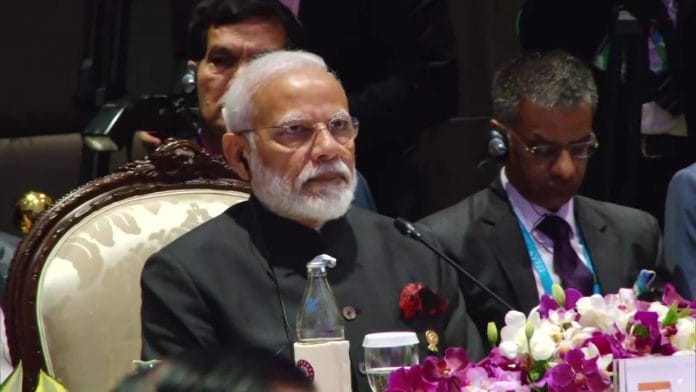From a political perspective, India’s decision overnight to walk away from immediate involvement in a trade zone encompassing half the world’s population and a third of its economy is good for almost everyone.
The government of Prime Minister Narendra Modi no longer needs to make difficult concessions on agricultural trade. Other members of the Regional Comprehensive Economic Partnership group, or RCEP, won’t need to open their home markets to India’s thriving, and low-cost, services sector. China, the linchpin of a zone that also includes the Association of Southeast Asian Nations, Japan, South Korea, Australia and New Zealand, will be able to move forward faster with an agreement that was at risk of being jeopardized by India’s foot-dragging.
The U.S., meanwhile, can take satisfaction from the fact that its key regional ally in New Delhi is remaining outside of Beijing’s orbit. A stronger RCEP that included India would almost certainly have revived politically fraught question of whether Washington should rejoin the rival Trans-Pacific Partnership agreement or TPP, which died in Congress under the Obama administration and was formally killed off by President Donald Trump.
That’s precisely the problem, though. Trade agreements are hard precisely because deals that are worthwhile economically tend to be politically hazardous, and vice versa. India’s pause on the RCEP isn’t the cause of the parlous state of international commerce in 2019, but it’s another telling symptom of a global trading system where volumes are now falling at the fastest pace since the 2009 financial crisis.
Both the RCEP and the pared-down, U.S.-free version of the TPP are better understood as attempts to harmonize trading standards than reduce tariff barriers.
In part this is a result of the success of previous trade agreements, which have lowered border levies to the point where the more potent restraint on commerce is often non-tariff barriers, governing areas such as food safety, licensing, and rules of origin. Even within the more protectionist RCEP zone, the median trade-weighted tariff had fallen in 2017 to about 5.15%, a lower average rate than Australia or Canada imposed in the mid-1990s.
Still, the effect of harmonizing standards at the regional-agreement rather than global level is the opposite of an opening of trade. The objection to the original TPP — that it resulted in the U.S. imposing its standards on other economies within the bloc — comes with the territory in such deals. The standards that are established across the zone inevitably resemble those of its largest member. That would be fine in a global agreement, but in a regional deal the effect is to raise barriers to nations outside the bloc with different rules.
In the case of RCEP, that means smaller and lower-income countries in Southeast Asia are likely to become more closely entwined with China, while their links with potential partners outside the zone will fall behind. The reformed TPP, likewise, will bind those nations closer to each other than to the rest of the world. Only the handful of countries in both blocs — Japan, Australia, New Zealand and Singapore — stand a chance of benefiting as much as China.
The result suggests that trade is moving in a similar direction to tech, with the world bifurcating into separate zones as tensions between China and the U.S. force nations to take sides. It’s a path that’s grimly reminiscent of the aftermath of World War II, when the U.S.-led Marshall Plan and Soviet-centered Comecon developed into rival trading blocs. That division split the global economy for the duration of the Cold War. We shouldn’t welcome its revival. – Bloomberg
Also read: India stayed out of RCEP because it couldn’t risk another China-dominated ASEAN






